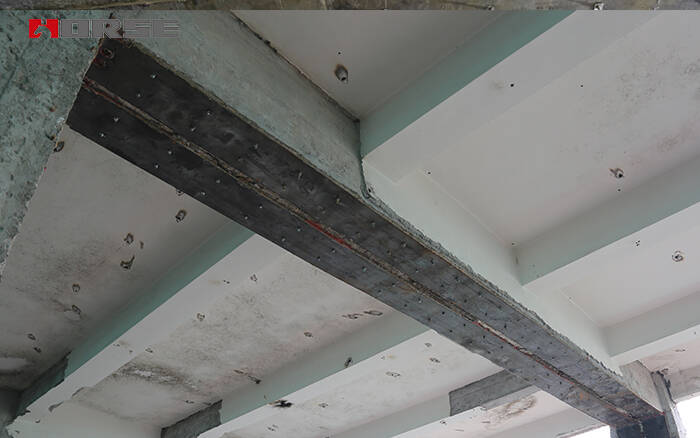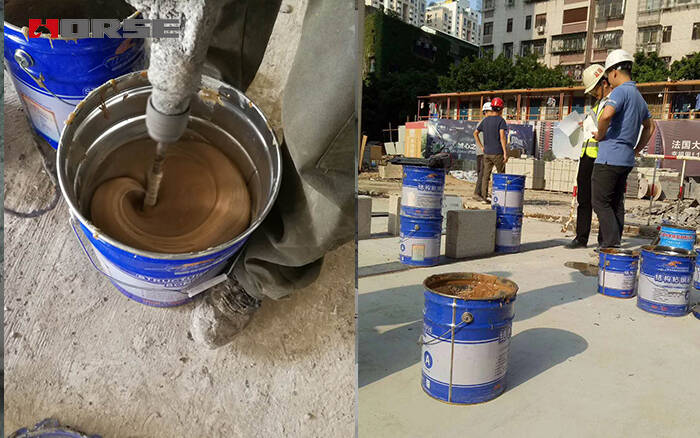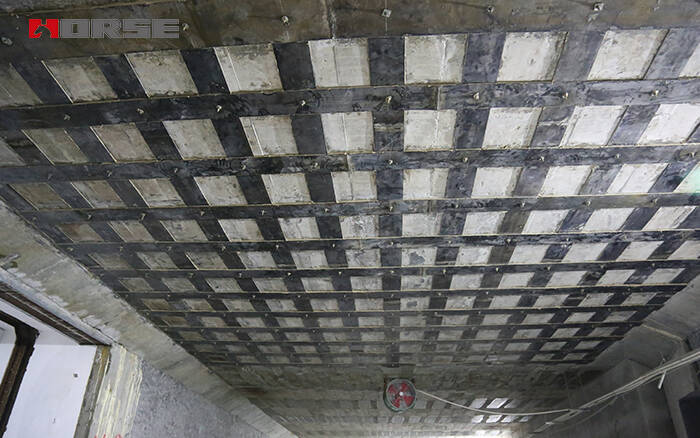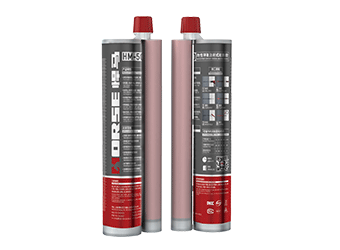Solutions
Horse Construction offers full range of structural strengthening materials with technical supports, documentation supports, products supports, project supports.
Strengthening of beams and slabs with steel plate:1.substrate surface clean; 2.scribe line ro setting out; 3.anchoring; 4.plate surface preparing; 5.bonding steel plate with the structural adhesive; 6.maintaince; 7.checking; 8.protection coating

1. Surface treatment
The surface treatment is the most critical process and should be carried out seriously, which includes the combination surface treatment of the reinforced component and the steel plate bonding surface treatment. For the concrete component surface, the following four cases should be treated according to the new and old degree of the component surface and the degree of dry and wet.
1.1 for the old and very dirty concrete components, we should first use the hard brush to dip the high efficient detergent, brush off the surface oil scale pollutants, then chisel the weathered shortening and carbonization layer, and then wear the sticky and surface to remove the 2 ~ 3mm thick surface, until the new surface is completely exposed, and the powder is blown away with the oil free compressed air. After treatment, if the surface is serious and uneven, epoxy resin mortar can be used for repair.
1.2 if the concrete surface is not very old and very dirty, it can be directly grinded to the adhesive surface, remove the 1 ~ 2mm thick surface, clean the dust and wipe the surface with acetone with skimmed cotton.
1.3 for the new concrete surface, first use a steel wire brush to brush the loose surface of the surface, and then brush the surface with a hard brush, or rinse with clean water, and then be completely dry.
1.4 for concrete members with larger humidity or concrete members of the age of 3 months, the bonding strength of general resin adhesive on wet base will be greatly reduced, so artificial drying is still needed to meet the above requirements.
1.5 for the bonding surface of steel plates, the following two methods should be adopted according to the degree of corrosion of steel plates:
1.6 the steel plate is not rusty or slightly rusty. It can be ground by sandblasting, abrasive cloth and grinding wheel until there is metallic luster. The bigger the roughness is, the better the grinding texture will be perpendicular to the force direction of the steel plate. Wipe clean with acetone.
1.7 if the steel plate is seriously corroded, it is necessary to soak 20min with appropriate hydrochloric acid, so that the rust layer will fall off, then rinse with lime water, neutralize acid ions, and use the grinding wheel to polish the stripe.
2.Prepare adhesive
The use of sticky steel structural adhesive in accordance with the prescribed proportion of a and B components, must be used at the scene of temporary preparation. The preparation should be carried out in strict accordance with the requirements of the product instructions, but due to the strong time limit of the glue, the field test should be carried out before use, and all the mechanical indexes are selected as the best ratio. Weighing according to the selected proportion, pour the two components of a and B into clean containers and stir them in the same direction until the color is completely uniform.

3.Paste steel plate adhesive
3.1 use the spatula on the treated concrete surface and the plate surface. In order to make the glue infiltrate, permeate, diffuse and adhere to the surface, it should be scraped and wiped a few times with a small amount of glue to the fitting surface, and then add to the required thickness (1 ~ 3mm), the middle thick edge is thin, and then the steel plate is attached to the predetermined position.
3.2 if the facade is pasted to prevent flow, add a layer of degreased glass cloth. After the steel plate is pasted, gently hammer the steel plate along the paste surface with a small hammer. If there is no voids, it means that it has been pasted tightly. Otherwise, the steel plate should be stripped and the adhesive should be re applied.
4.Fixation and pressurization
When the steel plate is properly pasted and properly pressed, the steel plate and concrete will be fixed with D4 nail immediately. To make the liquid just out of the edge of the steel plate. The nail is used as a permanent anchorage measure for the steel plate.

5.Curing
At present, the structural adhesives are cured at room temperature (20 degrees), and 3D can be used by force. If the temperature is below 3 C, low temperature curing adhesive or manual heating should be used. For small area reinforcement, it is usually heated by infrared lamp, and there should be no disturbance to the steel plate during curing period.
You can find anything here you are in need of, have a trust trying on these products, you will find the big difference after that.

two-components modified epoxy resin adhesive, with high quality plastic tube, double cartridge package

Two-component epoxy modified epoxy structural strengthening adhesive for bonded steel plate to concrete

Modified epoxy resin structural perfusion adhesive, specifically for supporting adhesive bonded steel reinforcement